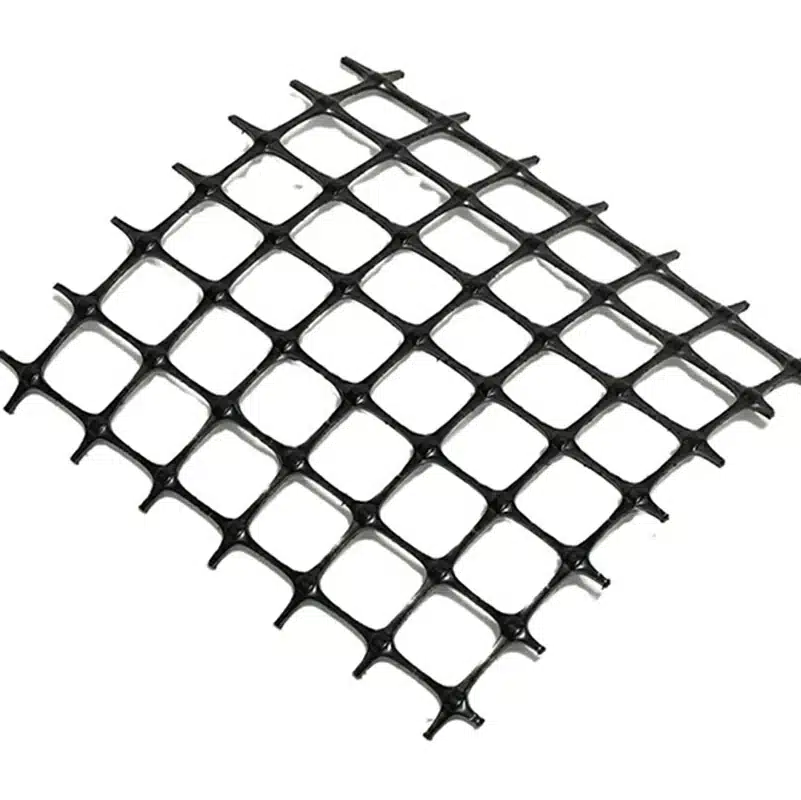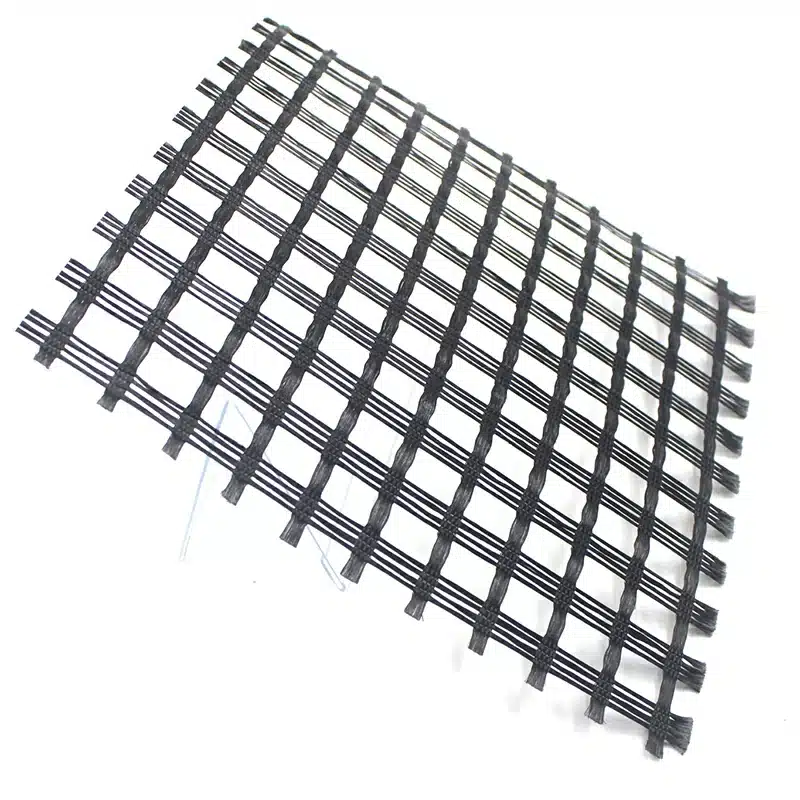+86-159 9860 6917
info@geofantex.com
geofantex@gmail.com
+86-400-8266163-44899
Geogrids, a term often encountered in the realms of civil engineering and construction, are pivotal to numerous projects across the globe. These synthetic materials, characterized by their open, grid-like structure, serve a crucial role in reinforcing soil. One notable application is their ability to create a reinforced coherent mass behind the retaining wall by stabilizing the soil, thus enhancing the stability and durability of infrastructures. They are the unsung heroes of the construction world, not only improving ground conditions but also ensuring the longevity and reliability of structures built upon them. This article explores the functionality, necessity, applications, and effectiveness of geogrids, offering insights into how these materials contribute to the advancement of construction technology, including their integral role in establishing a firm foundation behind retaining walls.

What is the function of the geogrid?
Geogrids are a type of geosynthetic material used in civil engineering and construction projects to reinforce soil and other materials. Their primary functions include:
- Reinforcement: Geogrids are used to enhance the strength and stability of soils and other materials. They are often used in retaining walls, embankments, and slopes to provide additional tensile strength, preventing soil from slipping or collapsing.
- Separation: By creating a barrier between different layers of materials, geogrids prevent them from mixing. This is particularly useful in road construction, where geogrids can separate the subgrade from the base course, maintaining the integrity of both layers.
- Filtration: Some geogrids are designed to allow water to pass through while retaining soil particles. This function helps in preventing erosion and maintaining the stability of soil structures by allowing proper drainage.
- Confinement: Geogrids confine soil particles within their apertures, which increases the load-bearing capacity of the soil. This is beneficial in applications like road construction, where it helps distribute loads more evenly and reduce deformation.
- Stabilization: By reinforcing the soil, geogrids increase the bearing capacity and reduce settlement. This is especially important in soft or loose soil conditions where additional support is needed to stabilize the ground.
Overall, geogrids enhance the mechanical properties of soil and other materials, making them crucial in various construction and geotechnical engineering projects.
Why do you need Geogrid?
Geogrids are essential in construction and civil engineering for several reasons:
- Soil Stabilization: Geogrids reinforce soil by providing a tensile strength that soil inherently lacks. This reinforcement helps prevent soil movement and increases the stability of structures built on or within the soil.
- Load Distribution: By spreading loads over a wider area, geogrids help reduce the pressure on the underlying soil. This load distribution minimizes settlement and enhances the bearing capacity of the soil, making it suitable for roads, railways, and other heavy-load structures.
- Erosion Control: Geogrids help prevent soil erosion by holding soil particles together, particularly on slopes and embankments. This is crucial for maintaining the integrity of slopes and preventing landslides or washouts.
- Reduction of Base Course Thickness: When used in road construction, geogrids can reduce the required thickness of the base course (the layer of material between the subgrade and the pavement). This can lead to significant cost savings in materials and construction time.
- Improved Pavement Life: Geogrids improve the durability and lifespan of pavements by reducing the effects of traffic loads and environmental conditions. This results in fewer repairs and maintenance over time.
- Cost Efficiency: By enhancing soil properties and reducing the need for additional materials, geogrids can lead to cost savings in construction projects. They allow for more efficient use of resources and can lower overall project expenses.
- Environmental Benefits: Geogrids can contribute to sustainable construction practices by reducing the need for new materials and enabling the use of locally available, less desirable soils that would otherwise be unsuitable for construction.
- Foundation Support: For structures like retaining walls, embankments, and bridge abutments, geogrids provide crucial support. They help distribute loads and improve the stability and safety of these structures.
- Versatility: Geogrids can be used in a variety of applications, from roadways and railways to landfills and landscaping. Their versatility makes them a valuable tool in numerous engineering and construction scenarios.
Overall, geogrids are a vital component in modern construction and civil engineering, providing structural support, improving soil behavior, and contributing to more durable and cost-effective projects.

Where are geogrids used?
Geogrids are commonly used in various applications and industries, particularly in construction and civil engineering. Here are some specific examples of their usage:
Reinforcement of Soils:
- Road Construction: Geogrids are used to reinforce the subgrade in road construction, improving the load-bearing capacity and extending the lifespan of the road.
- Railways: They provide stability to railway tracks by reinforcing the ballast and sub-ballast layers.
Retaining Walls:
- Gravity Walls: Geogrids are employed in the construction of retaining walls to provide additional support and stability.
- Segmental Retaining Walls (SRWs): They help in the construction of SRWs by interlocking with the soil, preventing wall collapse.
Slope Stabilization:
- Embankments: Geogrids are used to stabilize slopes and embankments, preventing soil erosion and landslides.
- Landfills: They provide stability to landfill slopes, ensuring the safety and longevity of the structure.
Foundations:
- Building Foundations: Geogrids are utilized to reinforce the soil under building foundations, reducing settlement and increasing stability.
- Bridge Foundations: They help in distributing the load and improving the strength of the foundation soil.
Erosion Control:
- Riverbanks and Shorelines: Geogrids are used to reinforce riverbanks and shorelines, protecting them from erosion caused by water flow.
- Dams and Levees: They provide additional strength to the structures, preventing erosion and failure.
Geogrids are versatile and essential components in modern construction and civil engineering projects, offering enhanced durability, stability, and longevity to various structures.
How effective is Geogrid?
Geogrid is a geosynthetic material used to reinforce soils and other similar materials. It is commonly employed in civil engineering projects to improve the stability and strength of the soil. This analysis explores the effectiveness of Geogrid in various geotechnical applications.
Performance of Geogrid
- Soil Reinforcement: Geogrid enhances the shear strength of soil, which is critical for the stability of slopes, retaining walls, and embankments.
- Load Distribution: It distributes loads more evenly across a wider area, reducing the risk of soil failure and increasing the load-bearing capacity of the ground.
- Erosion Control: By providing a structural framework, Geogrid helps in preventing soil erosion, especially in slopes and embankments.
Advantages of Geogrid
- Improved Stability: Geogrid significantly enhances the stability of soil structures, making it ideal for use in retaining walls, slopes, and embankments.
- Cost-Effective: Its use can reduce the need for expensive fill materials, making construction projects more economical.
- Durability: Geogrid is resistant to biological and chemical degradation, ensuring long-term performance.
- Ease of Installation: It is relatively easy to install, which can lead to reduced labor costs and shorter construction times.
Limitations of Geogrid
- Material Selection: The effectiveness of Geogrid depends on the correct selection of material type and design. Improper selection can lead to suboptimal performance.
- Installation Sensitivity: Incorrect installation can significantly reduce the effectiveness of Geogrid, making it crucial to follow manufacturer guidelines.
- Cost: While generally cost-effective, the initial investment in Geogrid can be higher than traditional methods, which might be a concern for some projects.
Geogrid is highly effective in enhancing soil stability and preventing erosion in various geotechnical applications. Its advantages, such as improved stability, cost-effectiveness, durability, and ease of installation, outweigh its limitations when properly selected and installed. The use of Geogrid can lead to safer, more reliable, and more economical civil engineering projects.
Geogrids are a cornerstone of modern engineering, offering innovative solutions to complex construction challenges. Through their ability to reinforce soil, enhance stability, and ensure sustainability, geogrids play a crucial role in the successful completion of various projects. Their widespread use across different applications highlights their effectiveness and versatility. As technology advances, the applications of geogrids are set to expand, further solidifying their position as an essential component of contemporary construction and environmental management practices.



Get Free Sample
We’ll respond as soon as possible(within 12 hours)






















